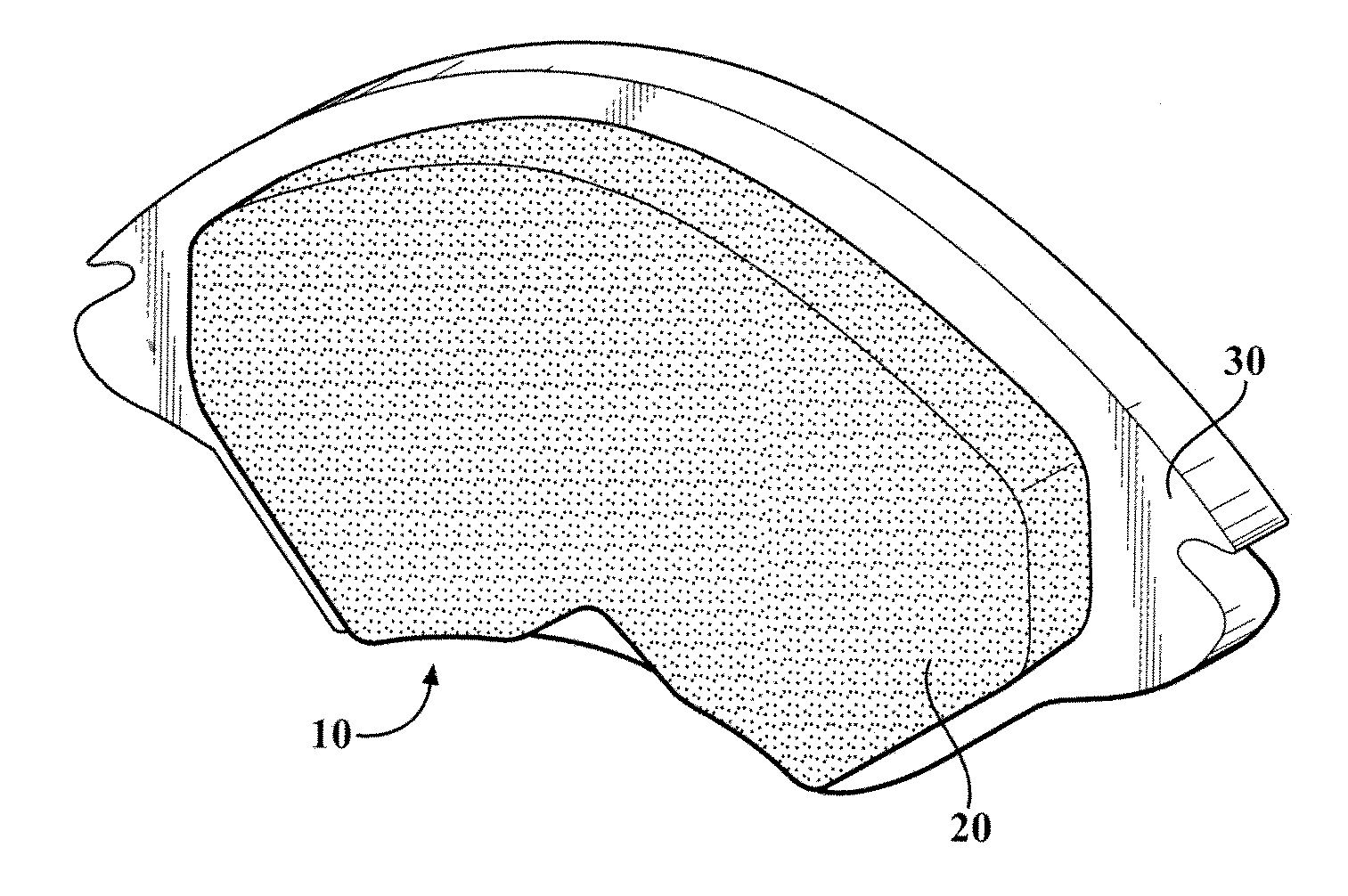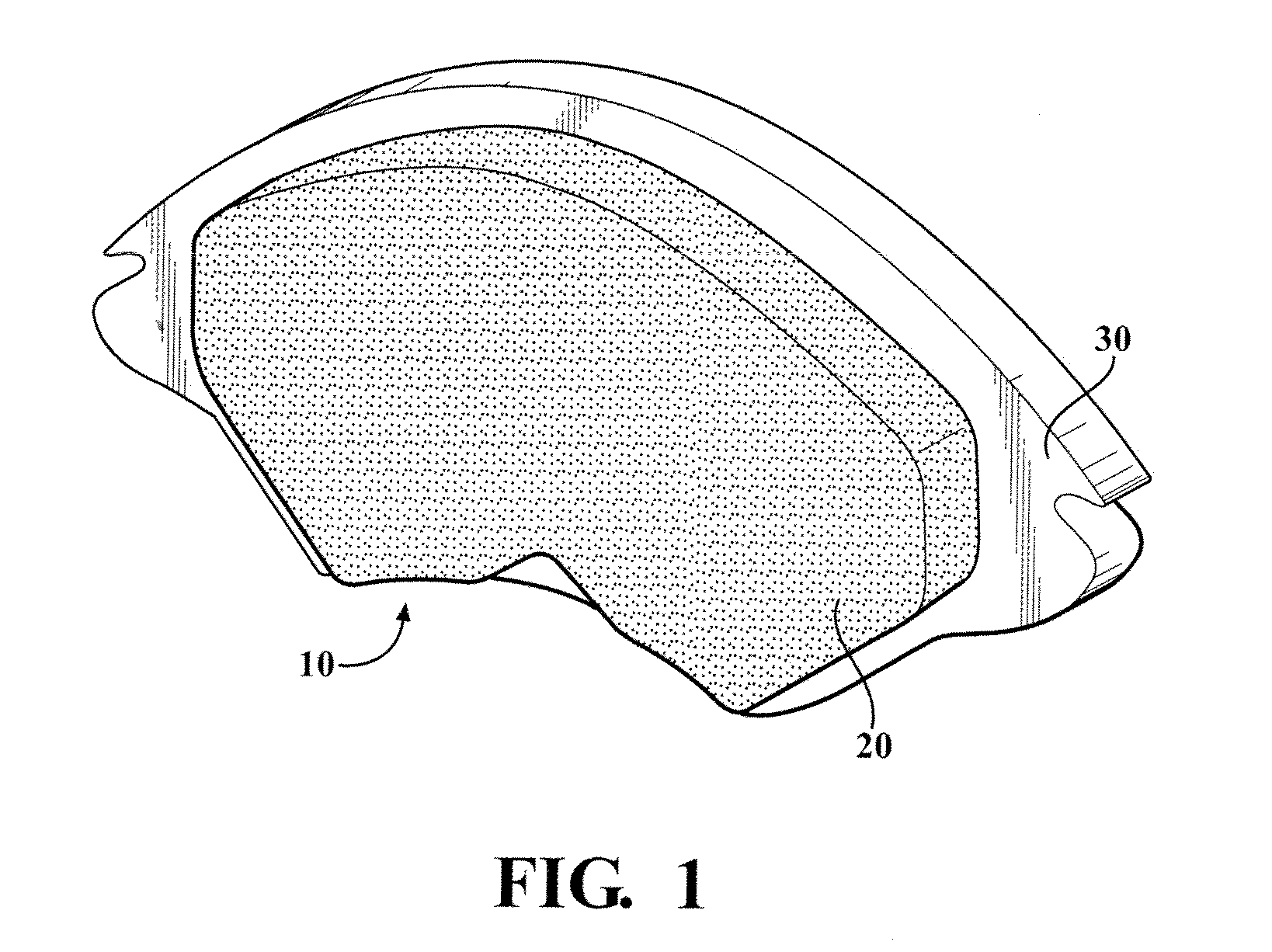Friction material for brakes
a friction material and brake pad technology, applied in the field of friction material for brake pads, can solve the problems of not being able to achieve the effect of sacrificing desirable performance characteristics without sacrificing success, and achieve the effects of excellent process capabilities, low scrap rate, and high efficiency
- Summary
- Abstract
- Description
- Claims
- Application Information
AI Technical Summary
Benefits of technology
Problems solved by technology
Method used
Image
Examples
##ventive example 1
INVENTIVE EXAMPLE 1
[0038]
Binder21Fiber7Lubricant4Total Abrasives15Filters53Copper and Copper alloys0Titanates0Total100
[0039]The friction material of Example 1 was found to have good all-around manufacturing and performance characteristics, similar to those of copper-containing or titanate-containing friction materials. The friction material provided the same level of friction, pad life, noise, and other performance characteristics typical of non-asbestos friction materials containing copper and titanate. The friction material also provided excellent process capabilities, including high efficiency and unexpected low scrap rates.
##ventive example 2
INVENTIVE EXAMPLE 2
[0040]
Binder24Fiber7Lubricant4Total Abrasives15Fillers50Copper and Copper alloys0Titanates0Total100
[0041]Some variations in Example 2 as compared to Example 1 included extremely low void volumes in the pad. Generally a very desirable characteristics for brake pads is low noise levels since the noise from braking is a common cause of customer complaints related to braking systems. Low level voids also correlate to very stiff pads with very low compressibility values. This material showed the lowest compressibility properties of all the examples tested, demonstrating that the high resin binder level affects this property. The bonding to the back plate both at room temperature and at 265-295° F. was excellent, and very low press pressures were required to get acceptable pad integrities. However, due to the low compressibility and in particular the low voids potentially causing noise, a binder level above 24% by volume of the friction material would be undesirable. Th...
PUM
| Property | Measurement | Unit |
|---|---|---|
| temperature | aaaaa | aaaaa |
| temperature | aaaaa | aaaaa |
| length | aaaaa | aaaaa |
Abstract
Description
Claims
Application Information
 Login to View More
Login to View More - R&D
- Intellectual Property
- Life Sciences
- Materials
- Tech Scout
- Unparalleled Data Quality
- Higher Quality Content
- 60% Fewer Hallucinations
Browse by: Latest US Patents, China's latest patents, Technical Efficacy Thesaurus, Application Domain, Technology Topic, Popular Technical Reports.
© 2025 PatSnap. All rights reserved.Legal|Privacy policy|Modern Slavery Act Transparency Statement|Sitemap|About US| Contact US: help@patsnap.com


